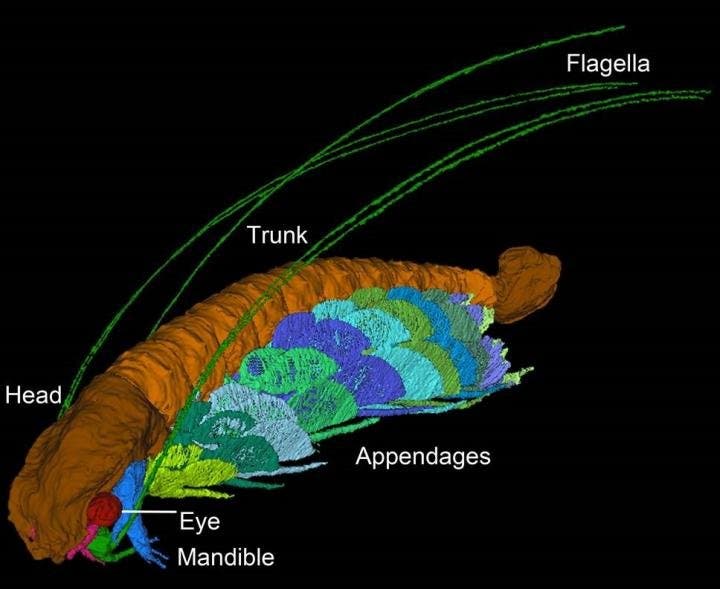An international team led by University of Leicester researchers has discovered a 430 million-year-old fossil and named it in honor of Sir David Attenborough.

Image credits Siveter et al, 2017.
As far as 430 million-year-old things go, it’s in surprisingly good shape, still preserving minute details such as the animal’s eyes, legs, fragile antennae, and other bits of soft tissue that usually don’t fossilize. It was probably an ancient crustacean, a distant relative of today’s lobsters or crabs, who got trapped in ash deposits accumulating under water in what is today Herefordshire, UK.
The fossil was uncovered by Professor David Siveter of the Department of Geology at the University of Leicester as part of a team that included researchers from the Universities of Oxford, Imperial College London, and Yale, USA.
“Such a well-preserved fossil is exciting, and this particular one is a unique example of its kind in the fossil record, and so we can establish it as a new species of a new genus,” Professor Siveter said.
The nine-millimeter long fossil is “characterized by a head with a head shield and five limb pairs, and a thorax with nine appendage-bearing segments followed by an apodous [without legs] abdomen.” It contains a treasure trove of information for scientists since it retains characteristics that are usually lost in fossilization. It’s especially fortunate since 430 million ears ago, during the Paleozoic, Earth and the life teeming upon it were undergoing a very dramatic process of evolution. The team hopes that its anatomy will offer researchers a glimpse “into the evolution of the body plan, the limbs and possible respiratory-circulatory physiology of a primitive member of one of the major groups of Crustacea.”
Professor Siveter further explained that while the animal was alive, most likely during the Silurian (a subdivision of the Paleozoic) much of Southern Britain was to be found in warm, subtropical latitudes. It was covered by a shallow sea and was “quite close to” the ancient equivalent of North America.
They named it Cascolus ravitis in honor of famous naturalist and TV broadcaster Sir David Attenborough’s 90th birthday. Cascolus comes from the latin words castrum meaning ‘fort’ and colus, ‘to live/dwell in’ — alluding to the Old English source of the surname, which roughly translates to ‘dweller by a fort’. ‘Ravitis’ is a mix between the Roman name for Leicester, ‘Ratae’, vita meaning ‘life’, and ‘commeatis’, meaning ‘messenger’. String them together and you get the latin for “Attenborough, the messenger from Leicester” — in recognition of Sir Attenborough’s work in popularizing the natural world and his history of growing up on the University College Leicester campus.
“In my youth, David Attenborough’s early programmes on the BBC, such as ‘Zoo Quest’, greatly encouraged my interest in Natural History and it is a pleasure to honour him in this way,” Professor Siveter said.
Sir Attenborough says the team made him “a very great compliment, […] the biggest compliment that a biologist or paleontologist can pay to another on” by naming a fossil in his honor.
The paper “A new crustacean from the Herefordshire (Silurian) Lagerstätte, UK, and its significance in malacostracan evolution” has been published in the journal Proceedings of the Royal Society B: Biological Sciences.


